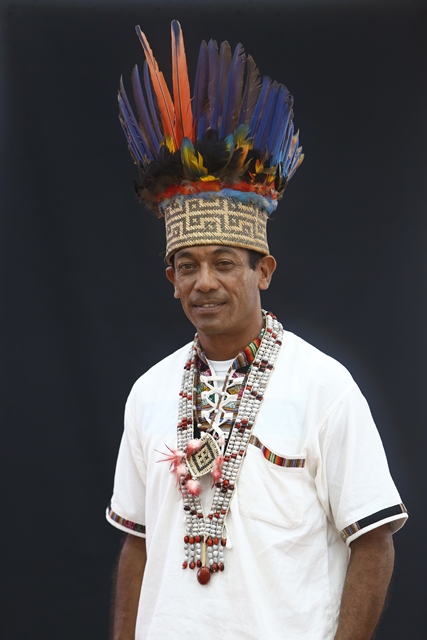Over the past two weeks, miners from Georgetown, Lethem and Brazil have returned to the Marudi Mountain area in the South Rupununi and it is a “a hell hole right now,” according to South Rupununi District Council (SRDC) chairman Nicholas Fredericks.
Fredericks told the Sunday Stabroek that he does not know whether or not they have permission to mine.
“Socially and environmentally, it is impacting on the life of the surrounding communities. We are now seeing the impact. All the creeks are polluted. People have a lot more mercury in their system. The miners are back and everything is chaotic,” he said in an interview on Thursday.
Fredericks, who is also the Chairman of the National Toshaos Council (NTC), explained that just over a year ago, with assistance from the World Wildlife Fund for Nature, residents from four communities Shulinab, Karaudarnau, Aishalton and Para Bara—underwent mercury tests.
The results showed that residents from Para Bara village had the highest level of mercury in their systems. “They are contaminated from the mines in Wakadanawa which flows into Kuyuwini River and also from waterways from Marudi Mountain, which flows into Kuyuwini. The water in Kuyuwini is red right now. They have no savannahs around them, so they depend heavily on the creeks for fish. Morning, noon and night, they eat fish. That is why they are so high in mercury intake,” he said.
The SRDC is having discussions on mercury contamination in the villages, he said, and is looking at how this situation is addressed, and how it could be fed into the Minamata Convention on Mercury, to which Guyana is a signatory.
In Region Nine (Upper Essequibo/Upper Takutu), he said, “There are very few creeks and rivers that are not contaminated. Only one waterway in Region Nine, that is, the Rupununi River, is not contaminated by mercury and that is because its source is not in any mining area.
“Takutu River on the border with Brazil, the mighty Essequibo, Rewa and Potaro rivers are contaminated by mining. We do environmental monitoring. That is why we have all this data.”
The Marudi Mountains, known Marutu Taawa to the Wapichan people and which is a sacred site to them, is the source of several of the country’s main waterways, he noted.
In recent months, pollution in the waters had eased up following an agreement signed between miners and the SRDC until certain conditions were met, Fredericks said. The agreement was reached during mediation facilitated by retired Major General Joe Singh.
“During that time, through a joint effort between the Guyana Geology and Mines Commission (GGMC) and the security forces, we got the miners to move out of the area. The pollution had eased a lot,” he said.
However, two Brazilian miners did not move and they have caused a lot of destruction, he said. “Now they are heading even further south to another sacred mountain. They are out of control,” Fredericks declared.
Fredericks said it does not appear that the GGMC is making an effort to deal with the situation.
“We cannot even verify if they are mining in a claim or they are mining out of a claim. We do not know and GGMC is reluctant to provide that information to us. I would go so far as to say I don’t think that they themselves know exactly if this operation is on a claim or not and whose claim it is. People are just jumping all over the place and doing as they please. It is terrible. Brazilians, coastlanders and Lethem business people. No indigenous person owns a dredge in there,” the NTC chairman said.
Fredericks said although it is illegal to use crushers and the miners are still using them.
“We cannot do anything about it without the authorities and the law enforcement agencies. They have threatened my life more than once. They sent me messages that they were going to come and kill me. It shouldn’t be hard for them to do that. It’s terrible. I know where the threats are coming from,” he said.
Asked if he has reported the threats to the police, he said, “I have never reported. It would make no difference or it would make things worse.”
On the issue of Romanex Guyana Exploration Limited’s – a subsidiary of the Canadian company Guyana Goldstrike – application to do large scale mining at Marudi, he said, the SRDC, representing 14 indigenous communities, has objected to the EPA granting them approval based on their draft Environmental Social Impact Assessment (ESIA).
At present, he said, the SRDC wants the EPA to revoke the “flawed draft ESIA,” and to conduct another with the full participation of the indigenous peoples who are affected by the mining, through the free, prior and informed consent process.
Though the SRDC has not received a written response to its concerns expressed in relation to the ESIA, Fredericks said the SRDC met with the head of the EPA and was heartened to note that their concerns were noted.
“We are looking to protect the environment. From what we have seen, the company is not clear on their whole method of mining. Based on the reports we are seeing from them, their information is not adding up,” he said.









